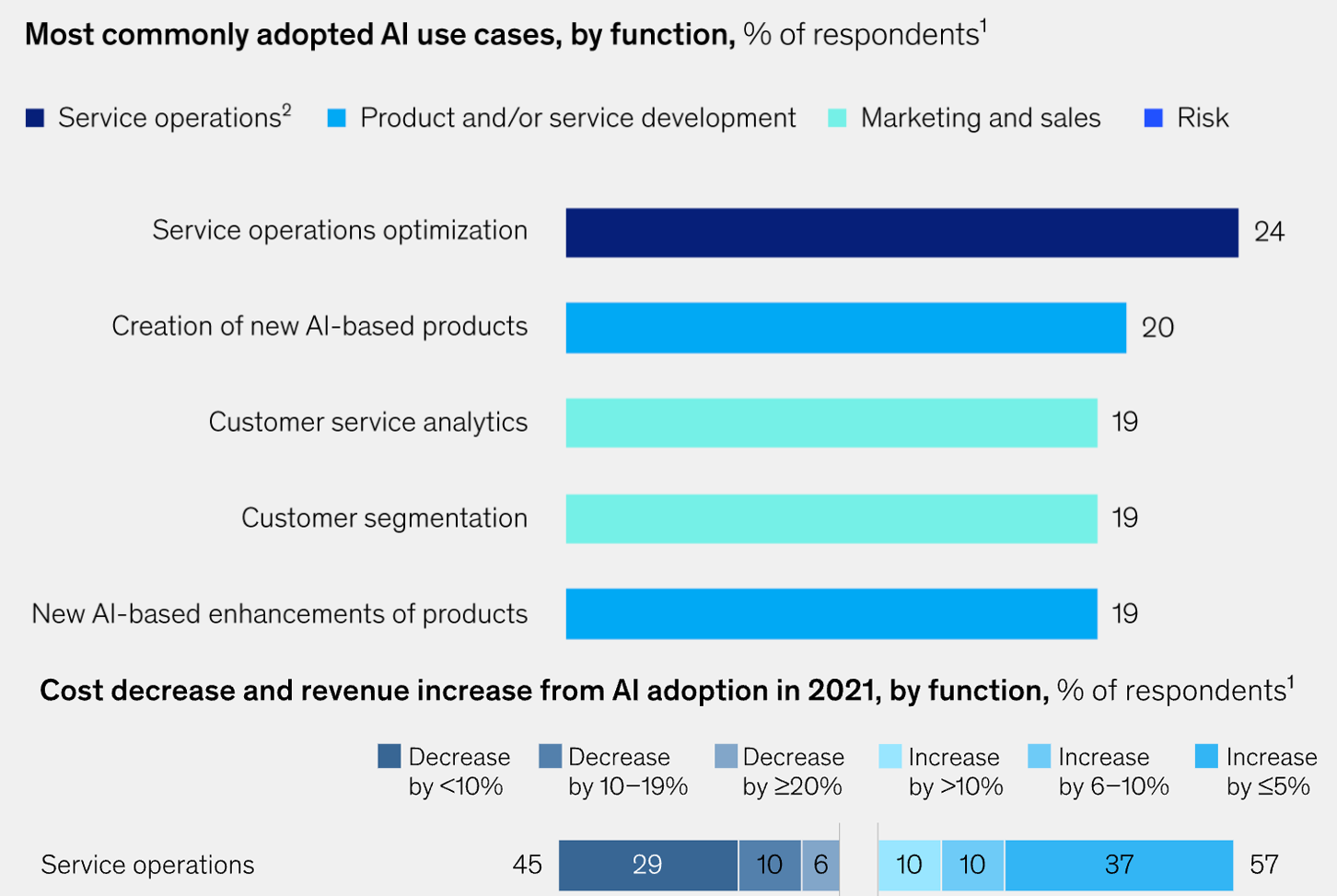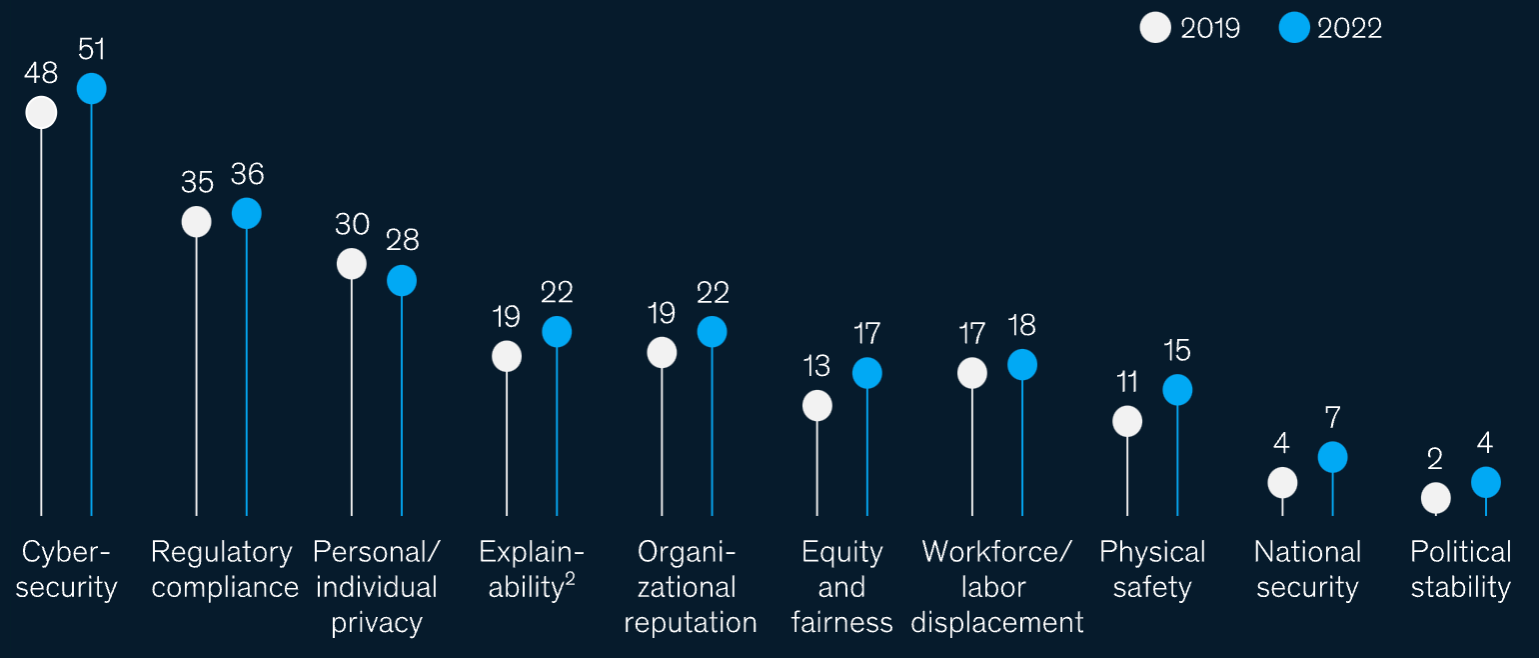*Editorial note: In some instances, ChatGPT provided a few elements that have been modified and used in this post.
The Financial Times recently reported that investments in generative AI surpassed $2 billion in 20221, with more than half of companies surveyed claiming they are allocating over 5% of their digital budgets to AI. Looking at this space from a different angle, OpenAI’s potential valuation for the sale of some shares reached $29 billion, according to the Wall Street Journal.2
These figures suggest that businesses are placing a big bet on the potential of generative AI to provide a significant return on investment. Keep reading as we explore how generative AI can positively impact business operations, perhaps justifying these impressive investment amounts.
IT services
In today’s digital age, businesses leverage AI to enhance their operations to stay ahead of the competition. Generative AI has emerged as a powerful tool for transforming this part of the business. According to the McKinsey State of AI in 2022 report, optimization of service operations has taken the top spot in the past four years.3

With generative AI, organizations can streamline their service operations, automate employee, partner, and customer service interactions, and provide personalized recommendations and feedback to users. Ultimately, by utilizing generative AI, organizations can deliver resilient, exceptional, high-performing experiences, increasing user satisfaction and improving business outcomes.
Generative AI can also help service operations become more resilient by identifying patterns and developing predictive models that anticipate user needs and enable proactive interventions to prevent service disruptions. By leveraging these insights, organizations can make data-driven decisions to quickly adapt to changing environments and respond to situations affecting the most critical business processes.
Product development, testing, and integration
The emergence of generative AI is expected to produce a collection of killer applications, and the competition to develop these applications is underway. Generative AI can significantly streamline the development process for software engineers, enabling faster and more efficient coding, testing, delivery, and integration, making the application layer and development environment even more poised for an explosion of creativity.

According to recent Forbes reporting4, 61% of enterprises considered the most advanced in AI/ML (Digital Champions) use fully integrated Product Lifecycle Management (PLM) systems, which can include areas such as product design, performance optimization, quality control, predictive maintenance, and supply chain management.
Generative AI is already changing the game by allowing developers to turn natural language prompts into usable application code. By simplifying the coding process and making application development more accessible to new developers, generative AI can accelerate developer onboarding, increase product development output, and streamline application and service delivery.
There is also a promising opportunity for AI innovation in A/B and multivariate testing where DevOps, engineering, and product management teams work together to identify the preferred usability features, workflows, and app and service responses.
Generative AI can also assist researchers in inventing new machine learning algorithms, which have traditionally been a manual process. With the aid of generative AI, this process can be much more easily automated.
Generative AI can cater to citizen developers and those without coding expertise, allowing them to build apps and solutions without knowing specific programming languages. Gartner predicts that within two years, 50% of development platforms will include such capabilities.5
As in other areas where machines create content, debates on intellectual property continue to arise with generative AI. Questions regularly surface about who can claim ownership (or cite plagiarism) of a new product design or idea created by the AI model from a user prompt. Still, as these technologies advance, we’ll likely see even more innovative applications of generative AI in the software space, regardless of who owns the rights to these machine-created results.
Security and compliance
According to a McKinsey report, the top two risks generated by generative AI in business systems and processes include cybersecurity and regulatory compliance.6 However, while generative AI may contribute to these risks, it can also be the protector in some aspects of security operations.

For starters, generative AI can aid cybersecurity teams in implementing defense and attack techniques to detect and stop adversarial tactics, some of which are likely created and delivered by generative AI systems. The technology helps look outward to detect the source, tactics, techniques, and attributes of current attackers and look inward to assess the attack surface and identify vulnerabilities that can be easily exploited.
Organizations can more effectively identify, anticipate, and react to cyber threats in real-time by utilizing generative AI in their cybersecurity operations. Generative AI can reduce the need for humans to perform repetitive tasks, allowing the security team to automate processes and focus on critical investigations. This can also minimize monotony, leading to innovation in human-intelligence operations. The ultimate benefit, of course, is accelerated threat detection and response.
Generative AI can also help security teams meet regulatory compliance requirements by automating compliance checks, analyzing and interpreting regulatory requirements, and developing effective compliance strategies. By analyzing large amounts of data, generative AI can flag any potential non-compliance issues in operating policies and controls while reducing the likelihood of human error. Using natural language processing capabilities, generative AI can extract relevant information from regulatory documents, making it easier for security teams to understand and comply with complex and ever-expanding regulations.
Overall, generative AI can be crucial in improving the efficiency and effectiveness of systems, applications, and operations throughout the organization by automating repetitive tasks, generating new ideas, and providing insights into performance, risk, compliance, and other business requirements.
- 1. Investors seek to profit from groundbreaking ‘generative AI’ start-ups, Financial Times, December 2022
- 2, 3, 6. The state of AI in 2022—and a half decade in review, McKinsey, December 2022
- 4. 10 Ways AI Is Improving New Product Development, Forbes, July 2020
- 5. What is Generative AI? – examples and numbers, Quidgest, December 2022
